You can sign up for workshops for a hands on experience as well. I took a workshop in flameworking and made a pendant. Flameworking is a type of glasswork that uses a gas fueled torch to melt rods and tubes of clear and colored glass. Once in a molten state, the glass is formed by blowing and shaping with tools and hand movements. It is also known as lampworking or torchworking.
It was really fun and my kids said "Oh no, now we know what Mom will be doing in the kitchen instead of making dinner!" Well I probably would if I didn't have too much on my plate already. Delaney made a pendant, Savannah and Larry made flowers.
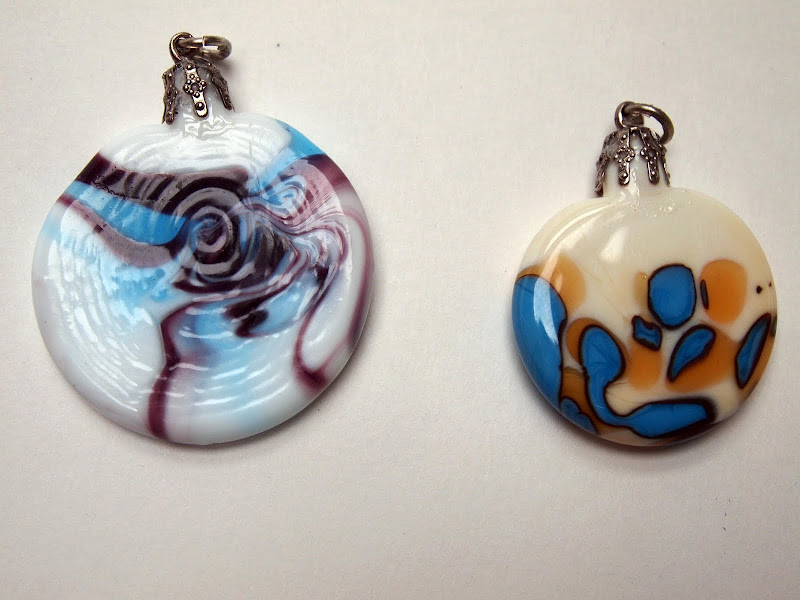
Delaney's is the one on the left, I like hers better than mine.
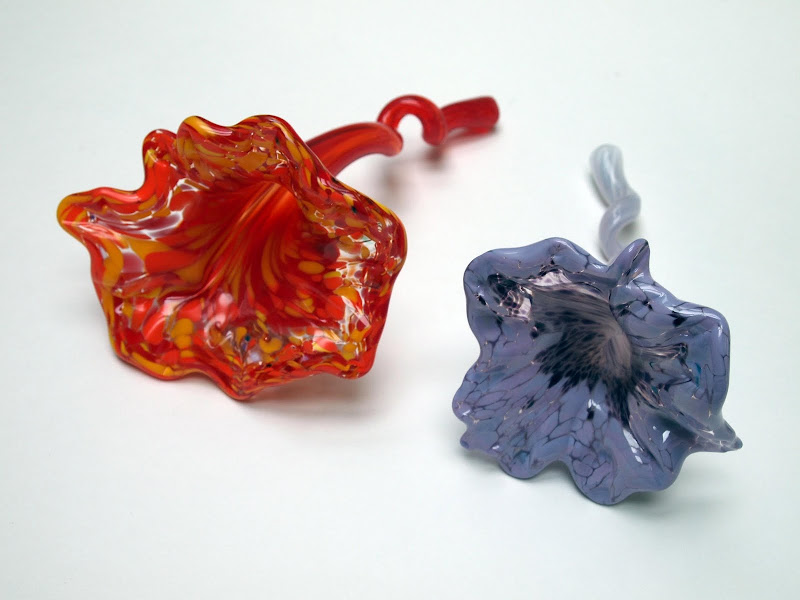
Larry's is on the left and Savannah's on the right.
The contemporary glass exhibition was my favorite part of the museum. Here's a few pictures of works that caught my eye. I regret not jotting down the artists names.
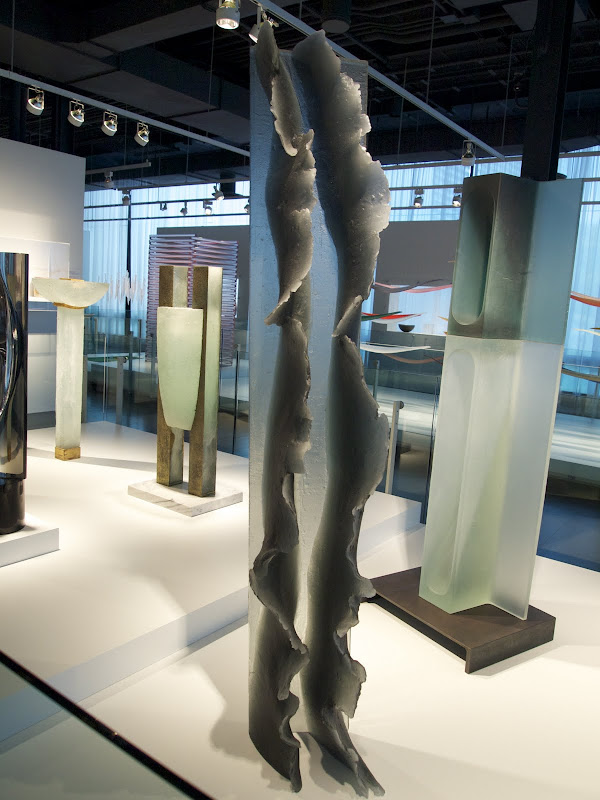
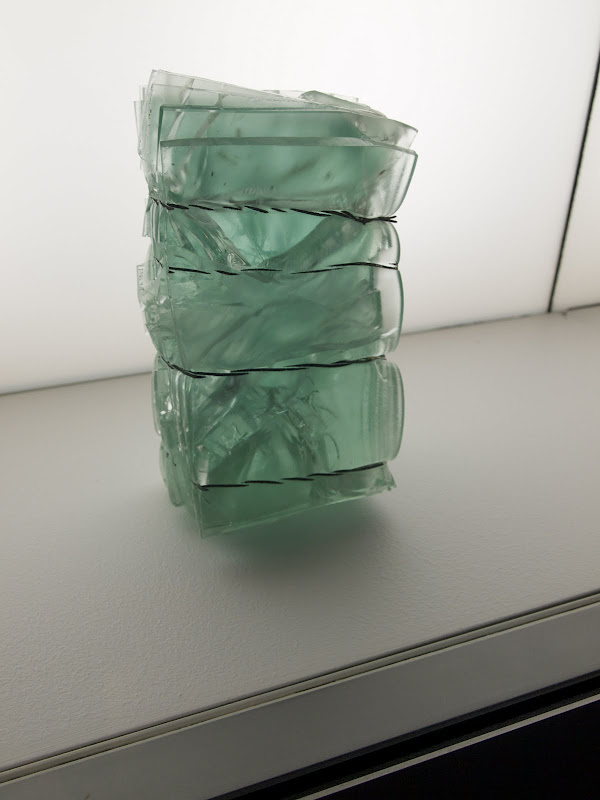

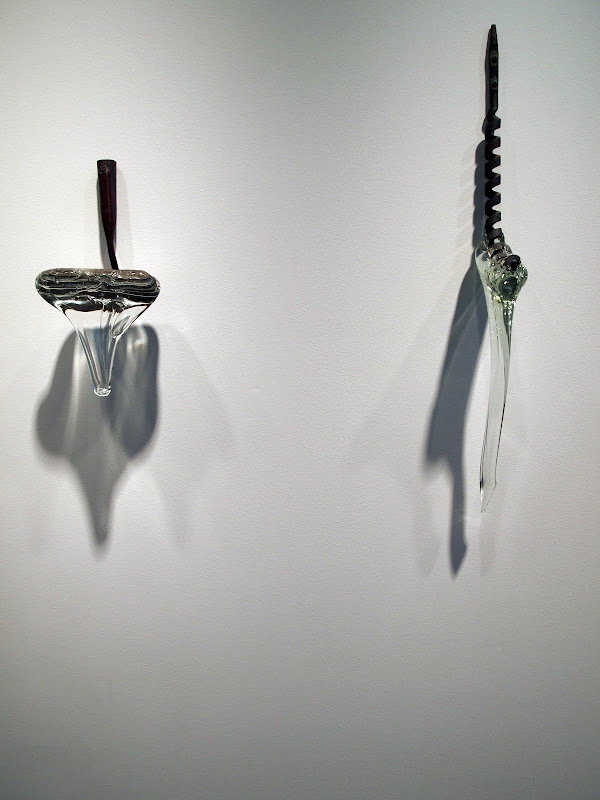
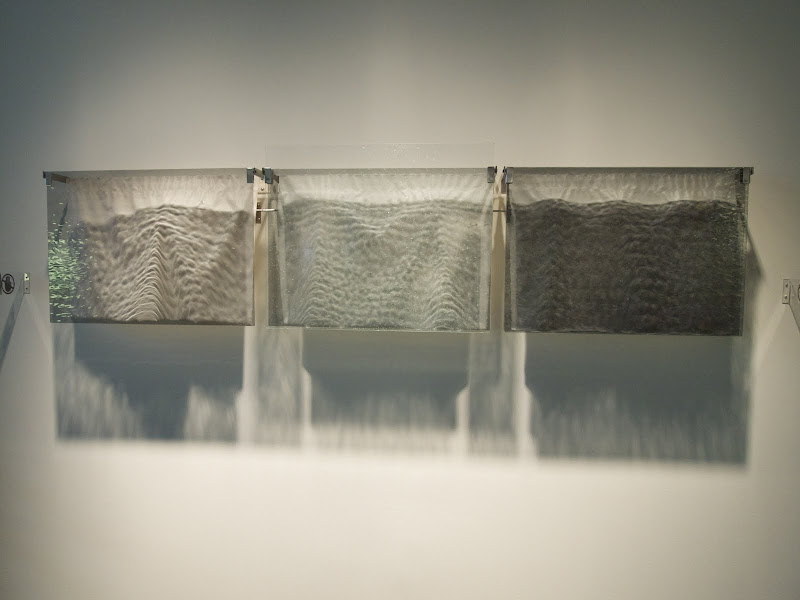
This piece had a motor making a piece of paper move behind the glass that animated it's surfaces and the shadows on the wall.
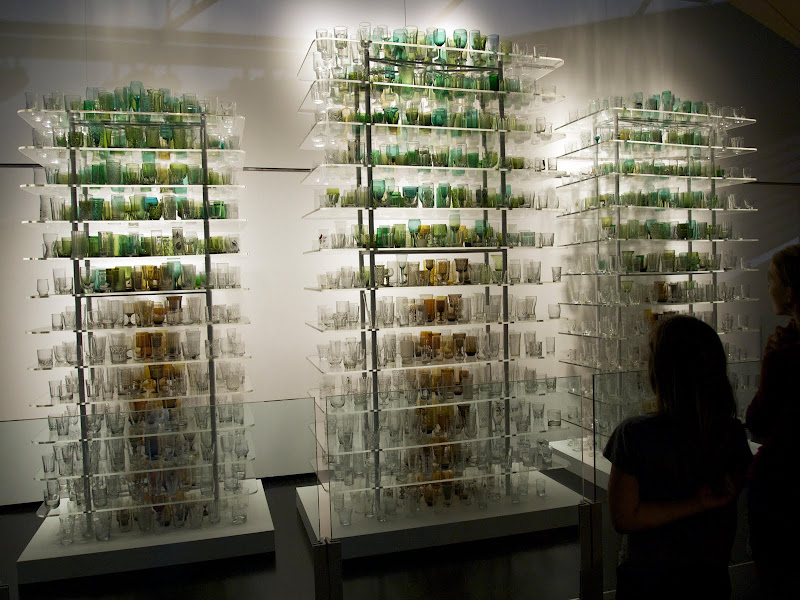
This installation by Katherine Gray consists of three “trees” made of everyday drinking glasses stacked on Plexiglas shelves with steel supports. The glasses are arranged on the shelves by color to form the outline of a simplified tree with green leaves and a brown trunk.
Although Gray is a skilled glassblower who could have made the components of Forest Glass herself, she chose to use only found or “pre-existing” glasses that she bought at thrift stores and on eBay. Some of the glasses are decorated with images of leaves. Others, which have birds or small animals, have been placed on the lower shelves, or at the “bases” of the trees.
Forest Glass is meant to make us think about the destruction that is inherent in the process of creation. The history of glassmaking in America, for example, is linked with widespread deforestation. Trees—in fact, forests of them—have been obliterated over the centuries so that their wood could be used as fuel for glass furnaces. (excerpted from Corning Museum of Glass website)